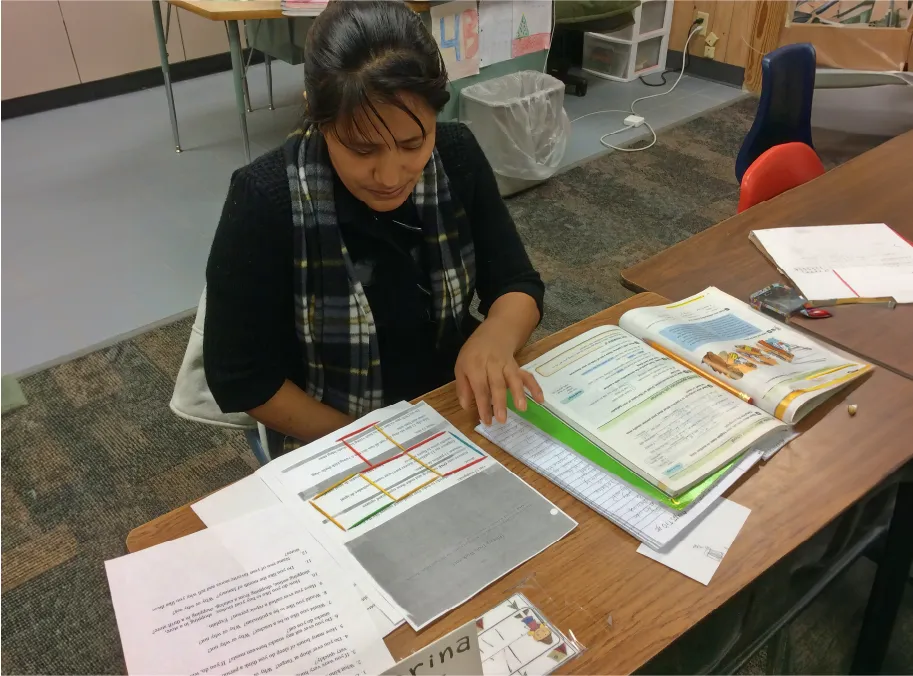Enrollment Marketing: Retention
What are you doing to make sure families and students stay in your district?

Originally published as "The Customer Journey: Retention" in the Winter 2024 issue of SchoolCEO Magazine.
Congratulations! Your families have filled out their forms, sent in their paperwork, and clicked “submit”—and you will officially have new students in your classrooms. But does that doesn't necessarily mean the enrollment marketing process is complete. After all, wouldn’t it be nice if students returned year after year, all the way through to graduation? Wouldn’t it be nice if they not only started going to school in your district, but finished their schooling with you as well?
School choice legislation means families can choose to leave your district at any time—and that’s what the Retention phase is all about. During this stage of the customer journey, the question is: What are you doing to make sure families and students stay in your district?
When you think about circumstances that might cause a student or family to leave your district, does your mind immediately go to everything that may have gone wrong? A lack of belonging? Difficulty with staff or peers? It’s true that sometimes these things happen, and it’s up to the district to make it right—but that’s not what we’re talking about here. (Here's more on providing customer service when there’s a problem.)
Instead of merely reacting to negative situations, how can your district proactively create an awesome experience for families so that—when school enrollment season comes back around—they consistently recognize your schools as the top choice for their children? After all, not all families who choose to leave your district do so because of a problem. Sometimes they simply believe there are better options elsewhere.
However, the more connected families are to your schools, the less likely they are to leave. In fact, the more you can do to involve and support your families, the better. That’s because the Retention phase of the customer journey isn’t just about retaining students—it’s about retaining their families, too.
Extracurriculars keep kids connected—and boost your enrollment marketing efforts.
You’ve seen the research: Participation in extracurricular activities has a positive correlation with graduation numbers. And when we’re talking about retention, keeping kids in the classroom also means reducing your dropout rates. Every activity or event that a student participates in is another opportunity for connection. It’s kind of like Velcro: the more points of attachment there are, the more likely your students are to stick around.
“For a student to really feel connected, that means more than just being in the building,” says Kyle Naughton, webmaster and English department chair for Community High School District 117 in Illinois. “It means having an opportunity to contribute to the school culture.” Engaged students are more likely to understand the importance of coming to school—of coming to your school.
And the more you can connect students to work that excites them, to one another, and to your staff—the more likely they are to stay in your district. “Students who stay after school doing fine arts and other activities are able to develop a sense of community,” Naughton says. “They’re building relationships with staff members and other like-minded students.”
Moreover, extracurricular programming is a great way to bridge gaps between grade levels. When you look at your district’s feeder pattern, where do families most often opt out of your district? Do you find that most families matriculate from elementary school to middle school seamlessly only to later choose a high school outside of your district? Extracurricular activities are a great way to get students—and their families—involved early. For example, if a student starts playing soccer as a Junior Bobcat, then they’re all the more likely to stay in your district long enough to become a High School Bobcat.
But if you want your students to get excited about your district, then you have to make sure they know what you offer. “What you don’t want is kids not joining anything because they don’t know about any of it,” says Naughton. “It’s not like our eighth graders don’t know football exists, but they may not know about field hockey or bowling or the robotics team.” If your students don’t even know what’s in store for them, then why would they be excited about staying in your district?
That said, simply making students aware of their extracurricular options isn’t enough; you also need to make them look fun. “Just having a list of the activities we offer doesn’t get anyone excited,” Naughton explains. “We want to capture moments, create videos, and design posters that make every activity look exciting. We want our students to feel like a big deal.”
CHSD 117 understands well the importance not only of providing extracurricular activities, but of spotlighting them—which is what led to the district’s sports media class. At its core, this class is all about creating content that promotes the CHSD 117 experience—whether that means crafting social media posts, designing posters, or writing copy for their student-run magazine. Members of the class thoughtfully document the extracurriculars CHSD 117 offers, from varsity athletics to JV quiz bowl. What the class prides itself on, though, is their innovative photography. Instead of the stilted team photos we’re all used to seeing, CHSD 117’s sports media students have figured out how to capture eye-catching photos that help build the district’s brand of excellence and intensity.
Naughton is quick to recognize that it will take more than visually interesting pictures to make students want to join the math team. But showcasing all the district’s extracurriculars as exciting opportunities will go a long way in developing a school culture where all activities are valued equally. “And the more we promote our activities,” Naughton says, “the more our teachers and counselors can say, Oh, I didn’t know you’re on the chess team! I saw your picture on Instagram! And our students see that their teachers care about them beyond just that one class. It helps our teachers remember that our students aren’t just brains on sticks. They’re whole people.”
By building excitement around your extracurriculars, you’ll make your students want to join the activities they’ve seen highlighted online or on posters around their schools. And if you can create a sense of belonging for your students, their families are more likely to recognize that their children are exactly where they belong: growing and learning in your district.

Help students and families plan their futures with you.
Recently, Spring Lake Park Schools in Minnesota took a hard look at how their students are making decisions about their futures. What is the district doing to support students as they make course selections? How are schools ensuring that each individual student has an academic plan tailored to their goals and interests? What can be done to better involve families?
As a part of the district’s approach to personalized learning, each student develops a plan. “When students enter their eighth grade year, they start planning for ninth grade and developing an initial four-year plan that they can revisit and revise throughout high school,” says Erika Taibl, executive director of communications, marketing and outreach for the district. “Starting in seventh grade, students participate in at least one meeting with their counselor each year to talk about their future plans.” This is an opportunity for students and families to make long-term academic plans. It also allows the district to ensure that each student is involved in something that excites them and relates to their future goals.
However, Spring Lake Park wanted to take it one step further, to help students plan for their futures even beyond graduation. And that’s exactly what their career and college pathways are intended to do. “We just added two construction trades courses to our technology, engineering, and design pathway,” Taibl tells us. “Some of those students have told me in interviews that they would have opted out of school altogether, but instead, they’re showing up to build houses and chicken coops. They’re engaged in that learning because they can suddenly see options for themselves after high school.”
Taibl recognizes, though, that allowing students to imagine their futures with—and even beyond—Spring Lake Park Schools is only half the battle. They must also make the process of registering for classes as easy and positive as possible. “We used to do registration a lot later,” she says. “We had our students making decisions in just five days or so. Now, we give families more time to browse course offerings and consider their options.”
The district also launched a website hub to help students and families prepare for registration. The hub includes an interactive online catalog that can be filtered by grade level, content area, and learning mode (school-based, hybrid, or online); a more traditional, downloadable course catalog; recorded presentations on key topics (such as career and college pathways or Spanish immersion); and a step-by-step guide on what to expect during the registration process.
“We’ve worked really hard to engage our families,” Taibl says. “It’s not just about connecting with students. We’re really pushing to share opportunities for career exploration and college credits with families, too.” By making it easier for families and students to plan out their futures in the district, the decision of where to attend school year after year is a no-brainer for Spring Lake Park Schools’ families.
Supporting families is a marketing strategy for school enrollment.
When it comes to enrollment marketing, investing time and resources in your families gives them even more reason to stick around. After all, people are less likely to leave a community if they feel supported. Superintendent Dr. Joshua McDowell of Crete Public Schools in Nebraska understands well the importance of bolstering a student’s support network. McDowell’s motto is “connected kids are successful kids.” He recognizes that for students to be connected and set up for success, their families must be connected, too.
One way Crete Public Schools supports its families is through its in-house adult education program, which currently enrolls about 200 adults. “They could be taking a family literacy class, adult basic education, English language learning, or even working toward their diploma. But we know how important it is that our families value education,” McDowell says. “If we have adults who are also involved and connected to our system, then the chances of their kids being successful is just that much higher.”
In addition to offering opportunities for adults, Crete Public Schools recognizes that many families’ work schedules make mid-afternoon pickup difficult. Kids need somewhere to go after school while their parents are still at work. So the district built a robust after-school program that is free of charge. Now, every student is offered a snack and dinner in addition to breakfast and lunch.
Even if your district can’t offer after-school care and all three meals to every student, what can you do to make your families’ lives easier—to more deeply connect them to your schools?

Don’t take your families for granted.
When was the last time you went to the DMV? Did you enjoy your experience there? We probably know the answer to that question, but our bet is you’ll still end up going back—because you have to. Some places don’t have to worry about offering an awesome experience or making things easy on the folks they serve; their “customers” have no choice but to return. However, that’s just not the boat most districts are in—and that's why enrollment marketing matters.
“You’d never want to take for granted that you have a built-in base of customers,” Naughton tells us. “You need to always treat people with respect, offer them the best possible product, and give them the best experience you can for their tax dollars.”
Schools often don’t talk about their families in such blunt terms—but the reality is that your families are your customers. Retaining them means giving them a great experience, getting them excited about being in your district, and making their choice to stay as easy as possible. That’s how you keep students all the way through to the finish.
Subscribe below to stay connected with SchoolCEO!


